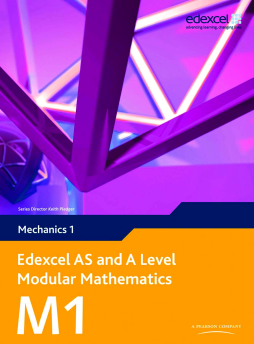
BOOK
Edexcel AS and A Level Modular Mathematics Mechanics 1 M1
Susan Hooker | Michael Jennings | Bronwen Moran | Laurence Pateman
(2016)
Additional Information
Book Details
Abstract
Edexcel and A Level Modular Mathematics M1 features:
- Student-friendly worked examples and solutions, leading up to a wealth of practice questions.
- Sample exam papers for thorough exam preparation.
- Regular review sections consolidate learning.
- Opportunities for stretch and challenge presented throughout the course.
- ‘Escalator section’ to step up from GCSE.
PLUS Free LiveText CD-ROM, containing Solutionbank and Exam Café to support, motivate and inspire students to reach their potential for exam success.
- Solutionbank contains fully worked solutions with hints and tips for every question in the Student Books.
- Exam Café includes a revision planner and checklist as well as a fully worked examination-style paper with examiner commentary.
Table of Contents
| Section Title | Page | Action | Price |
|---|---|---|---|
| Cover | Cover | ||
| Contents | ii | ||
| About this book | iv | ||
| Chapter 1: Mathematical models in mechanics | 1 | ||
| 1.1: Different modelling assumptions, and how they affect calculations | 2 | ||
| Chapter 2: Kinematics of a particle moving in a straight line | 4 | ||
| 2.1: Formulae for a particle moving in a straight line with constant acceleration | 5 | ||
| 2.2: Further formulae for a particle moving in a straight line with constant acceleration | 10 | ||
| 2.3: Using the formulae for constant acceleration to model an object moving vertically in a straight line under gravity | 17 | ||
| 2.4: Representing the motion of an object on a speed-time or distance-time graph | 24 | ||
| Summary of key points | 36 | ||
| Chapter 3: Dynamics of a particle moving in a straight line | 37 | ||
| 3.1: Using the formula F=ma to solve problems involving force and acceleration | 38 | ||
| 3.2: Solving problems involving forces by drawing diagrams and resolving | 42 | ||
| 3.3: Resolving forces that act at an angle to find the component that acts in a certain direction | 45 | ||
| 3.4: Calculating the magnitude of the frictional force using the coefficient of friction | 48 | ||
| 3.5: Solving problems about particles on inclined planes by resolving forces parallel and perpendicular to the plane | 53 | ||
| 3.6: Solving problems involving connected particles by considering the particles separately | 56 | ||
| 3.7: Calculating the momentum of a particle and the impulse of a force | 65 | ||
| 3.8: Solving problems involving collisions using the principle of Conservation of Momentum | 68 | ||
| Summary of key points | 79 | ||
| Review Exercise 1 | 80 | ||
| Chapter 4: Statics of a particle | 92 | ||
| 4.1: Solving problems about particles in equilibrium by resolving forces | 93 | ||
| 4.2: Knowing when to include additional forces, such as weight, tension, thrust, normal reaction and friction | 97 | ||
| 4.3: Solving statics problems involving friction using the relationship F≤µR | 103 | ||
| Summary of key points | 115 | ||
| Chapter 5: Moments | 116 | ||
| 5.1: The moment of a force acting on a body | 117 | ||
| 5.2: The sum of the moments of a set of forces acting on a body | 119 | ||
| 5.3: Solving problems about bodies in equilibrium by equating clockwise and anticlockwise moments | 122 | ||
| 5.4: Solving problems about non-uniform bodies by finding or using the centre of mass | 126 | ||
| Summary of key points | 132 | ||
| Chapter 6: Vectors | 133 | ||
| 6.1: Vectors to describe displacements | 134 | ||
| 6.2: Adding vectors, and representing vectors using line segments | 136 | ||
| 6.3: Describing vectors using i, j notation | 140 | ||
| 6.4: Solving problems using vectors | 141 | ||
| 6.5: The velocity of a particle as a vector | 143 | ||
| 6.6: Solving problems involving velocity and time using vectors | 144 | ||
| 6.7: Using vectors to solve problems about forces | 148 | ||
| Summary of key points | 154 | ||
| Review Exercise 2 | 155 | ||
| Examination style paper | 166 | ||
| Answers | 169 | ||
| Index | 179 |
